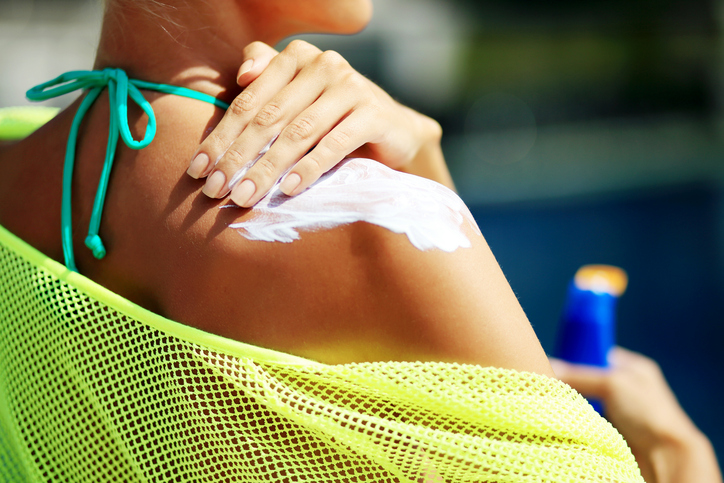According to the American Cancer Society, skin cancer is the most common of all cancer types. More than 3.5 million people are diagnosed with skin cancer each year in the United States—that’s more than all other cancers combined. Most skin cancers can be detected through skin examinations. Both regular skin exams by your doctor and checking your own skin more frequently can help you find new skin or mole changes.
When examining your own skin, look for these warning signs:
A (asymmetry): Do you have a mole that is asymmetrical?
B (border): Do you have a mole with an uneven border?
C (color): Do you have a mole that is more than one color?
D (dimension): Do you have a mole that is larger than the size of a pencil eraser?
E (evolving): Do you have a mole that has changed over time?
If you notice any suspicious spots or feel uncomfortable about the way a mole is changing, it is important to talk to your doctor. In fact, you should see a dermatologist once a year for a skin check, or more often if recommended based on your medical history.
Too much exposure to the sun’s harmful UV rays is the number one cause of skin cancer. Take these steps to defend your skin against damage.
- Apply sunscreen with a sun protection factor (SPF) of 30 or greater at least 30 minutes before sun exposure. Reapply at least every 2 hours after the first application, or more often if you are sweating or swimming.
- Wear sunglasses with total UV protection.
- Stay in the shade as much as possible.
- Wear wide-brimmed hats that cover and protect areas like your head, neck, face and ears.
- Wear clothing made of tightly woven fabrics that are light, vivid colors.
- If you already have sunburn, wear long-sleeved shirts and pants to prevent further skin damage.
- Avoid direct exposure as much as possible during peak UV radiation hours, between 10 am and 2 pm.
- Avoid tanning beds.
Choosing the right sunscreen is important! Keep these tips in mind while shopping for sunscreen.
- Look for both UVA and UVB broad spectrum protection. UVA and UVB are invisible wavelengths of light that reach the earth and cause damage to skin.
- Opt for water-resistant sunscreen.
- Always check the expiration date. Even if you’re buying new, you should check just to be safe. If you have old sunscreen at home, make sure it didn’t expire before you use it. Sunscreen can lose its effectiveness over time. When in doubt, throw it out.
- The longer you’ll be outside, the higher the SPF you’ll needed:
- SPF 15 filters out 93% of incoming UVB rays
- SPF 30 filters out 97% of incoming UVB rays.
- SPF 50 filters out 98% of the incoming UVB rays.




[…] Sources: 1. (2017, July 15). Remember the ABCs of Skin Cancer. Retrieved from http://blog.healthadvocate.com/2017/06/remember-the-abcs-of-skin-cancer […]
[…] Perform self-examinations on your skin regularly to become familiar with any existing growths (such as moles) and to notice any changes or new growths. […]